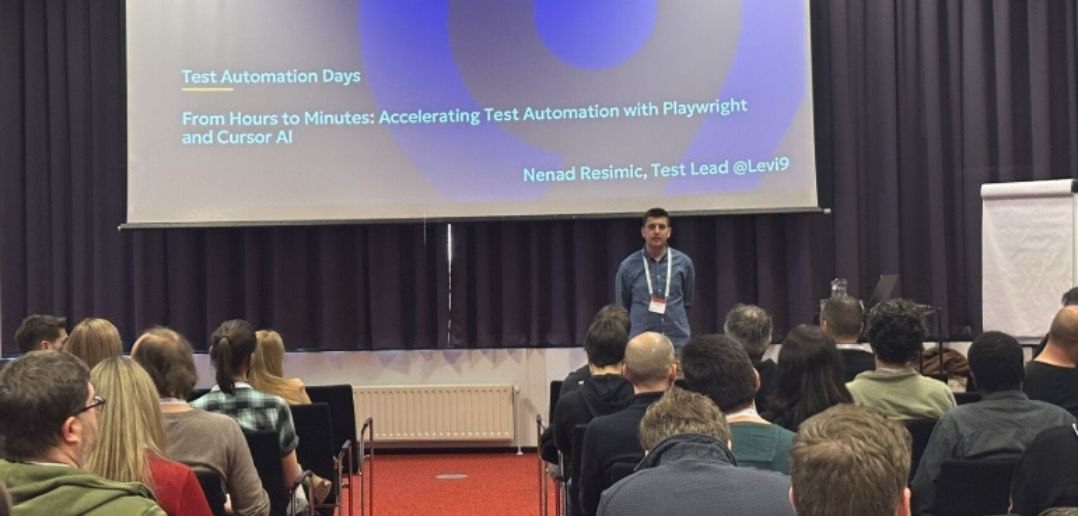Candidates apply via email, documentation is stored on paper, and information is manually entered into Excel spreadsheets in an attempt to maintain organization and clarity. Sounds familiar? Almost every HR professional has been in a situation like this at least once.
When setting up HR processes, especially with limited budgets and urgent organizational needs, a strategic approach is key. We often rely on available systems and improvise to meet requirements. However, organizational growth brings new challenges.
The rapid pace of growth can make it difficult for HR teams to adapt to changes and automate processes. The result? Imagine a labyrinth of Excel spreadsheets, filled with data critical to the organization, where a single wrong click can cause an error. Such chaos can have serious consequences and pose a risk to the organization.
At Levi9, the development of HR processes and systems has undergone 19 years of evolution. Today, the Levi9 Talent team uses multiple systems that are carefully integrated to support the complex needs of the company. Our experiences, trials, and errors have inspired us to share our knowledge with the community.
Why Invest in HR Tools?
According to Josh Bersin, a globally recognized HR analyst, the HR software market in 2023 is worth $250 billion. By comparison, the market for AI-based software was worth around $200 billion at the same time.
The application of software is diverse – from recruitment and selection to employee training and employee data management. Every organization needs to carefully assess when and what to invest in, and it’s never too early. Tools that we invest in while establishing HR processes already have best practices implemented in them, which will help us set up those processes the right way.
Here’s what else they bring us:
- Positive Candidate and Employee Experience – HR systems consolidate numerous pieces of information and steps into a single system, making the application and selection process easier for candidates, providing employees with an overview of information, and helping us make quicker decisions.
- Say Goodbye to “CTRL+F” in a Forest of Rows – These systems automate many routine tasks, significantly accelerating these processes. In one hour, we can send test invitations to 100 candidates, schedule several interviews, and enter all the candidates we have contacted directly into the same system.
- Confidential Information in Safe Hands – HR software ensures data access control, so each team member has access only to relevant information, while at the same time complying with legal regulations such as GDPR.
- Data, Data, Data – Probably the biggest benefit of HR systems is the amount of data we would otherwise lose or spend hours calculating, now at our fingertips. Metrics such as Time to Hire, Offer Acceptance Rate, NPS Score, and Attrition Rate are much more accessible with software and help us improve everything we do.
In-House or External Solution?
When you decide to invest in HR software, one of the first questions you might ask yourself is whether you want to develop your own solution or invest in software already available on the market.
First, assess the budget and time you have available to develop the software from scratch. Again, it is important to note that even software you purchase cannot be used “overnight.” The period of researching the software market, its implementation, and adapting to organizational needs usually takes several months and a lot of attention.
Second, consider your needs and how necessary it is for the tool to be tailored to you and your processes. Although all software is advertised as flexible and customizable, it is important to consider whether the functionalities you need actually fit into the offered options.
Third, think long-term. The tool not only needs to be developed, but also needs someone to maintain it and resolve issues that arise. Opt for an in-house solution if you expect the system to serve you for a long period without changes, meaning it won’t be urgent to resolve bugs that will inevitably occur.
Choosing HR Tools is Just the Beginning
We have already mentioned that implementing HR systems can be challenging and can take from several weeks to several months, depending on the software’s complexity. The more complex the processes, the harder it will be to adapt them to the new system.
Then begins the learning process.
If you have a larger team, they also need to get familiar with the new tool. You will make mistakes, set up some elements incorrectly, and possibly be uncoordinated. It is important to closely monitor how you adapt to the system and vice versa, and within a few months, everything should fall into place.
As organizations evolve, so do systems. This means you will be in contact with consultants, conveying your needs and feedback, and receiving updates about changes in the tool from them. You can expect some of these to be exciting, while others may bring about changes that may not be welcome at the time.
Do Integrations Create Harmony or Chaos in HR Software?
One system pulls another, and over time you will probably juggle several tools. Be cautious not to create another labyrinth – what were once connected Excel spreadsheets are now integrations.
Most HR tools will proudly share that they are integrated with each other – a recruitment system will directly transfer a candidate who accepts an offer to the employee management system, a candidate testing tool will automatically display results in the recruitment system, etc.
Although this seems appealing and is indeed a significant benefit, it should not be the criterion when choosing a system. Often these integrations are precisely what cause the most problems. You will probably spend hours on the phone with two separate support teams who will insist that it’s not their issue but the other’s. However, don’t let this discourage you – once you achieve synergy among multiple systems, you have maximized the optimization of your HR processes.
Ready?
Implementing new systems requires careful planning and team engagement. The learning process is continuous, and collaboration with companies that offer software solutions is key to maintaining the system at the highest level of efficiency. Be prepared for challenges and changes because that is the right way to maximize the potential of HR systems. We invite you to explore different software options and prepare for the next step in optimizing your HR processes!
Written by
Ivana Nenin, Talent Recruiter







